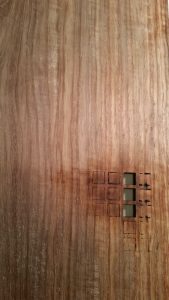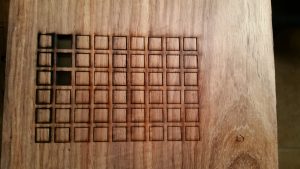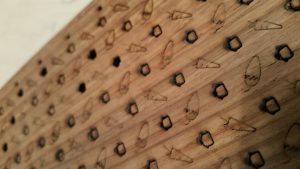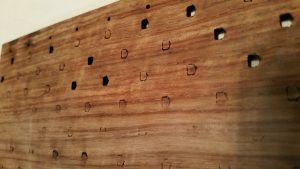Learning the Limitations of Lasers
I acquired some beautiful African teak for a project in the laser. The multi-colored grain is gorgeous, and I wish I could share how the wood smells through the internet.
I was going to have plenty, so I started with a power/speed grid. Speed gets faster left to right, and power goes up bottom to top. The back looked close to “normal”, even with extra scorching on the slow speeds and the left most column not falling out like the one next to it. I thought nothing of it and forged on.

I picked a low power/fast speed setting for etching, and the lowest power I could for cutting. But as I cut my project, I became less and less excited about how things were looking. The etching looked okay, but the cutting of the little stew-pot shapes was doing something…. odd.
You can better see what happened from the back. It turns out that beautiful grain pattern means that the density of this wood is highly variable. In the thinner areas, it scorched and burned beyond the shape intended. In the denser parts, the laser didn’t even make it all the way through the wood.
This is the danger of working with natural materials. I was so used to the ubiquitous birch plywood, which while occasionally a knot will put an odd spot in your project, is fairly consistent. I didn’t realize just how varied African teak is until I tried cutting into it, and I should have looked my laser test pattern a little more critically and asked myself why it looked a bit off.


